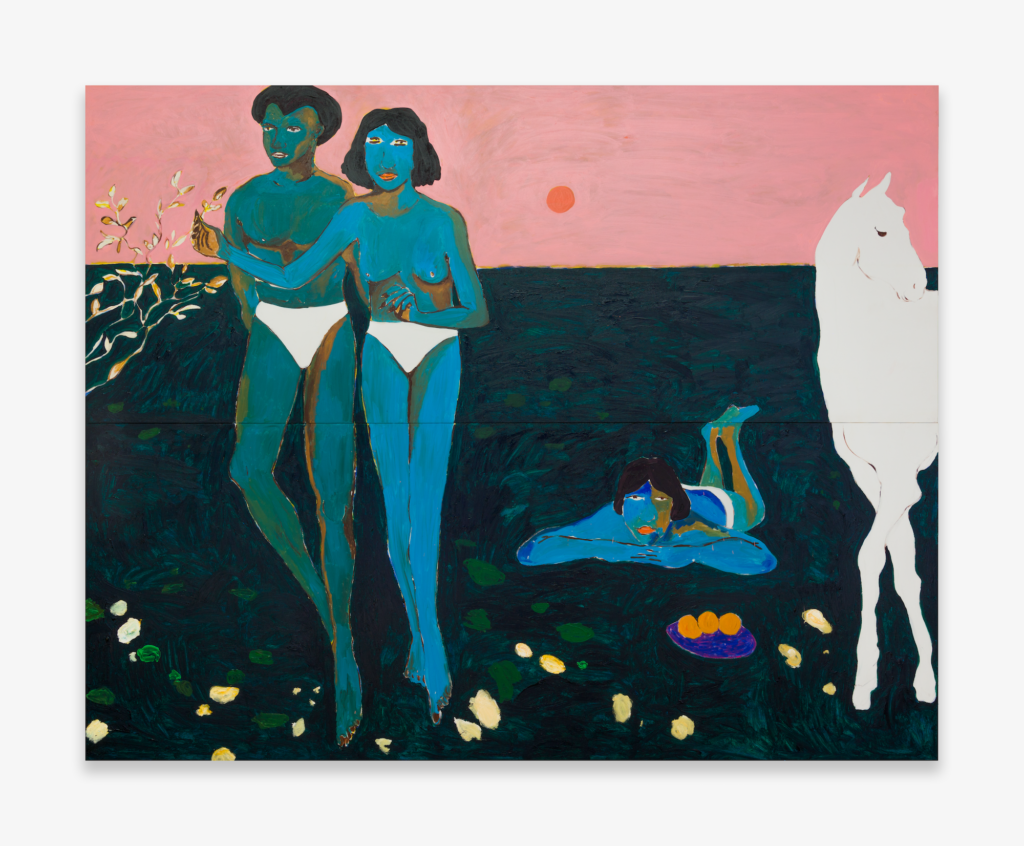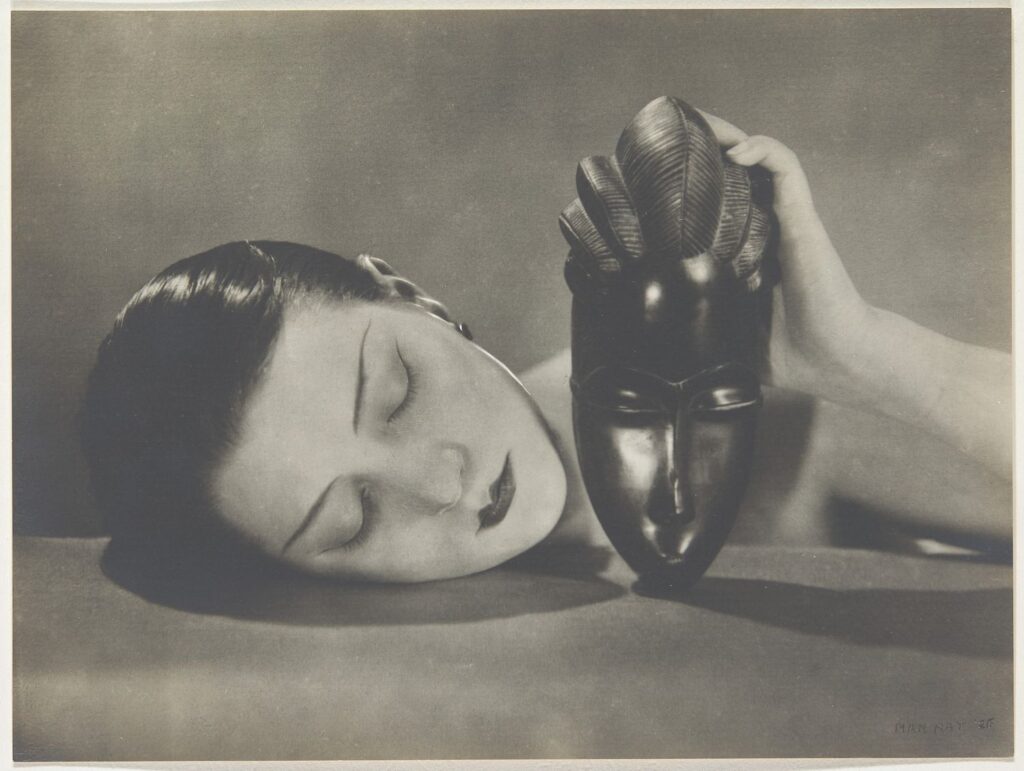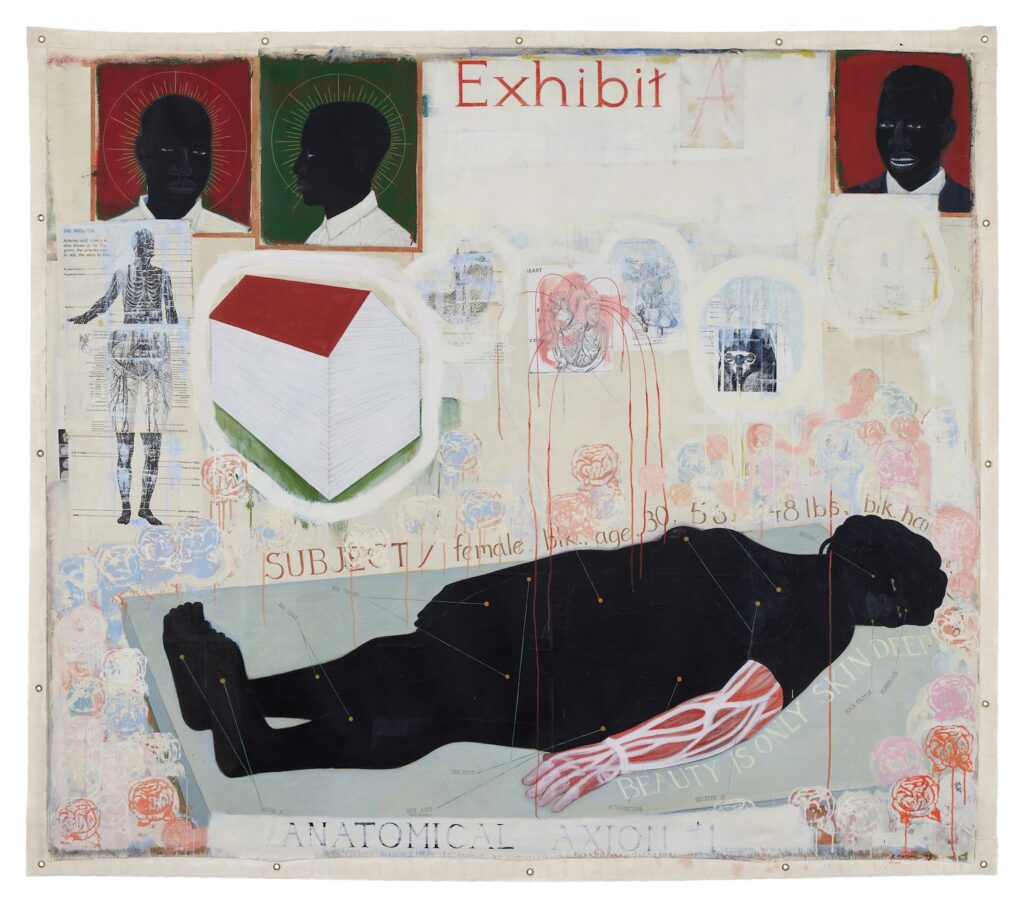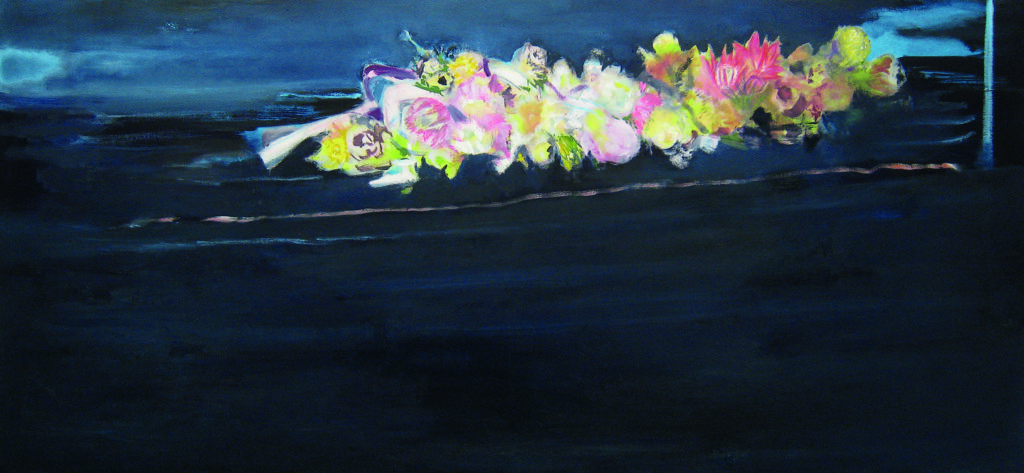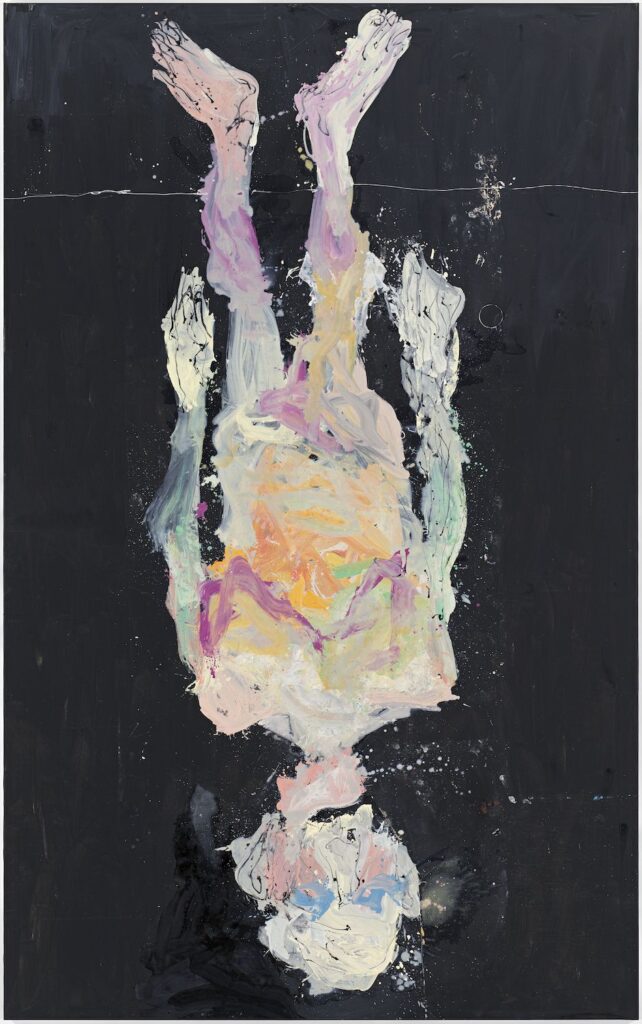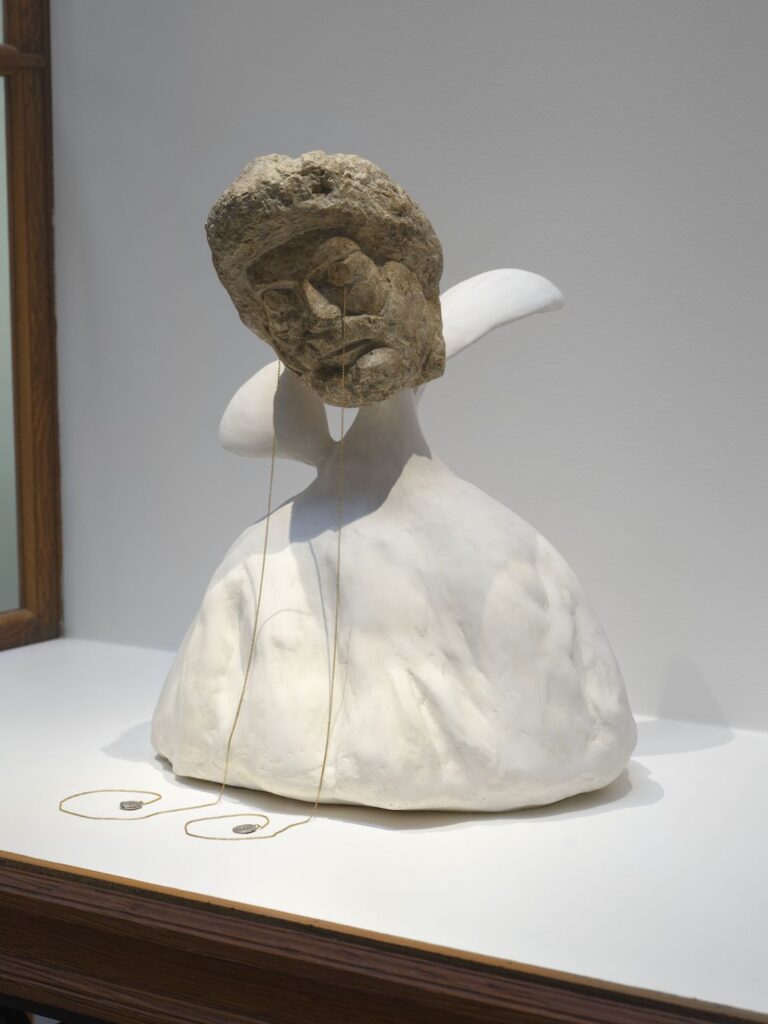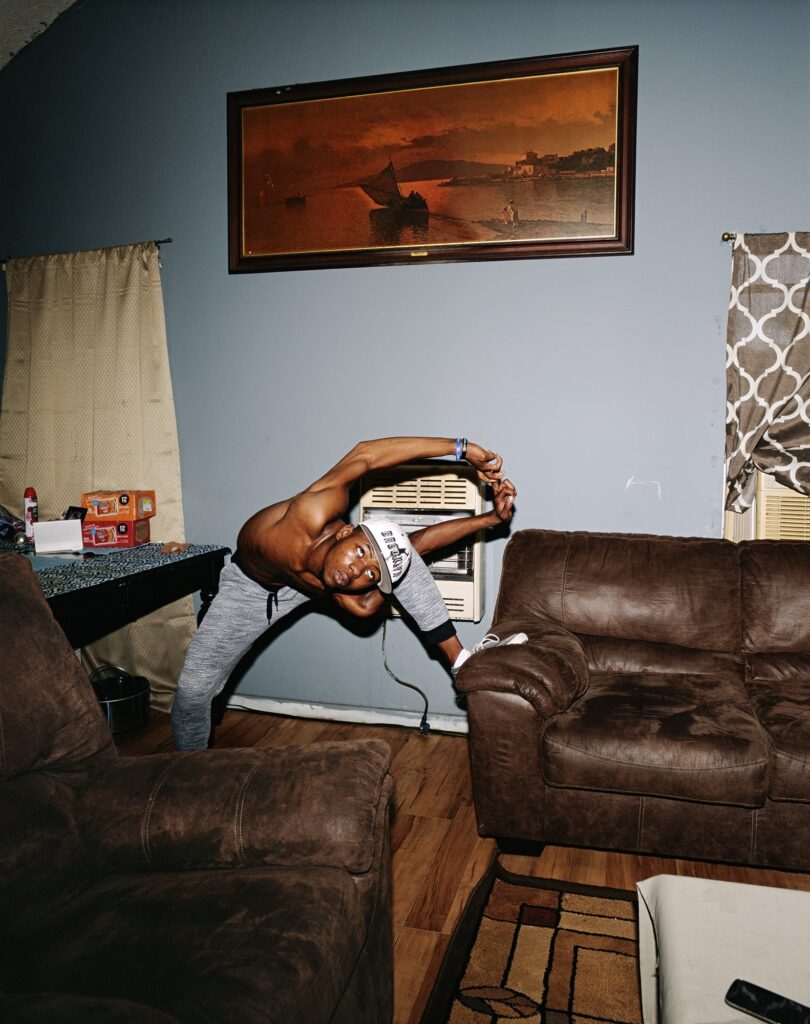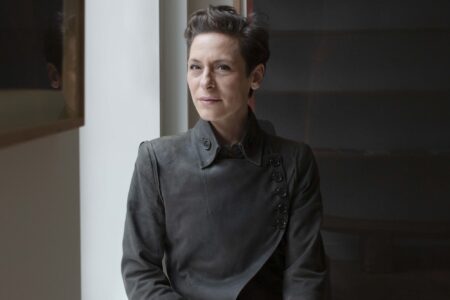Corps et âmes at the Bourse de Commerce
The Bourse de Commerce brings together over 100 works from the Pinault Collection to present the exhibition “Corps et âmes,” an exploration of representations of the body in contemporary art. The exhibition is on view through August 25th, 2025.
“Art seizes the energies and vital flows of our thoughts and inner lives to create a socially committed, humanist experience of otherness. Forms metamorphose, returning to figuration or freeing themselves from it, to grasp, hold on to, and allow the soul and consciousness to reveal themselves. It is no longer a matter of merely painting bodies, instead capturing the forces that run through them, to bring to light what is buried and invisible, and to open up the shadows,” writes Emma Lavigne, Chief Curator of “Corps et âmes,” and General Director in charge of the Pinault Collection.
The exhibition brings together over 100 works from 40 contemporary artists living and working around the world. The approach is global and diverse, with a range of media, from painting to video and of perspectives and intentions. The exhibition opens with Georg Baselitz’s wooden sculpture, “My New Cap,” (2003), placed in the vestibule of the rotunda building. The artist’s first sculptural self-portrait, it has the image of a child from the front, holding a skull behind his back as if hiding some uncertain truth. Ambiguity abounds and this tension is at play throughout the exhibition.
In the nearby Salon, a diptych by Ghanian artist Gideon Appah, “The Confident” and “The Woman Bathing,” (2021), both of which are inspired in some ways by Matisse, Cezanne or Gaugin, with the uniquely coloured landscapes and semi flattened spaces, are paired near to a series of Ana Mendieta’s “Silueta Sangrienta” (1975). Both contend with this connection of women and landscape, at once beautiful, powerful and yet also about isolation and disconnect.
The body as witness is a central theme in the exhibition. As Lavigne writes: ““Inspired by the struggle for consciousness and the resistance struggles of the 1960s tied to the civil rights, feminist, and peace movements, artists use the body as a seismograph and privileged witness to a form of socially committed art that voices the anger of our contemporary world and the ongoing threats to individual integrity. Photography, drawing, sculpture, and painting use the body to testify to their deep otherness and to render visible that which is imperceptible or buried. The works bear traces of the scars of history, taking the pulse and the imprint of individuals who have been invisibilised. They often strip the body bare to reveal more of the soul. They bring out the beauty, humanity, and energy of real and fictional beings who reclaim their rights and their place in history.” The visual and political reflections around the body is another important theme in the show. Works by Kerry James Marshall, Lorna Simpson, Robin Rhode and Anne Imhoff, to name a few, reflect moments of struggle, empowerment, brutality and history.
In “The Body Exposed” works by Diane and Allan Arbus, Claude Cahun, Marlene Dumas and Niki de Saint Phalle liberate the body from traditional passive representations from art history. “The representation of bodies becomes polyphonic and reveals both the fragility and the pulsating energy of a body retaking possession of its relationship to the other and to the world,” writes Lavigne. In addition to the main exhibition, three films by Los Angeles-based artist Arthur Jafa that belong to the Pinault Collection are being screened for the first time ever in Paris. Love is the Message, the Message is Death (2016), AGHDRA (2021) and akingdoncomethas (2018). There is a solo show of photographs by Deana Lawson, the first solo show of her work in France, and, in the Passage of the Bourse de Commerce, there is an exhibition of work by Ali Cherri, whose sculptures, as Lavigne writes “have been conceived as ghostly flashes occupying a liminal space between life and death and between past and present, and which ask us to reflect on the age-old manipulations of cultural artifacts”
Throughout the duration of the exhibition, there will be a series of talks and events around the theme of “Corps et âmes” (Body and Soul). A bilingual catalogue has been co-published by the Pinault Collection and Editions Dilecta. The exhibition is on view from March 5-Auguest 25th, 2025.
(Opening image credit: Lynette Yiadom‐Boakye, Light of The Lit Wick, 2017, oil on linen, 202 × 132 × 6.5 cm (framed). Pinault Collection. © Lynette Yiadom‐Boakye. Courtesy of the artist, Corvi‐Mora (London) and Jack Shainman (New York).
